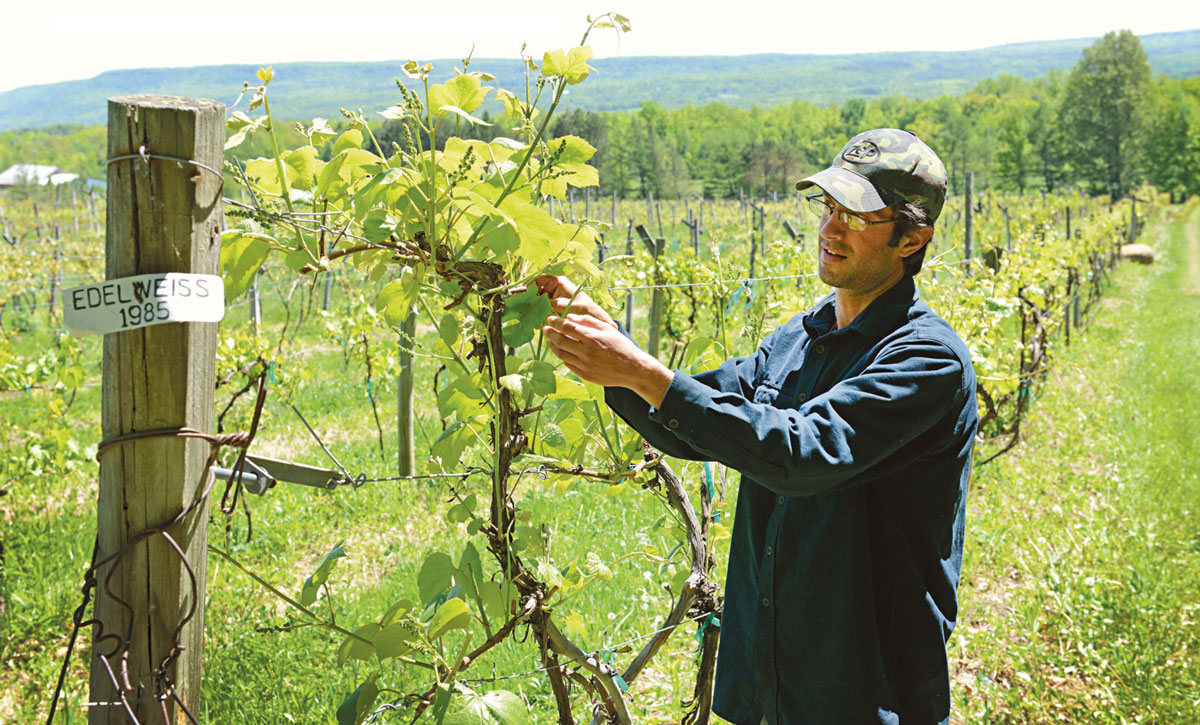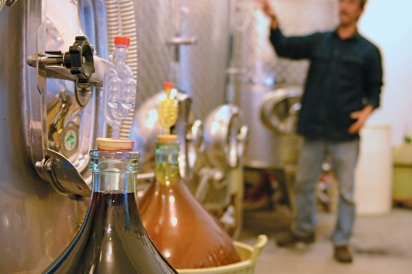Altamont Vineyard and Winery
The product most historically associated with terroir is, of course, wine. The Hudson River, just to our south, and the Finger Lakes, to our west, have been a nationally recognized American Viticultural Area since 1982, but the Capital District has long been viewed as a no-man’s land for oenophiles.
“The perception that Albany County is unsuitable for grape production is slowly but surely changing,” Michael DiCrescenzo, the vintner at Altamont Vineyard and Winery, says. “Our vineyard is situated on part of the Helderberg Escarpment, with a 750-foot change in elevation. Our slope has a southern exposure which helps us get plenty of sun. We also benefit from really mineral-rich heavy soil that’s well-drained, which the vines love.”
Altamont Vineyard and Winery has been in operation since 2006 but has been a working vineyard since 1981, when it was planted by the Grossi family. The DiCrescenzo family bought the vineyard and slowly nursed it back to blooming health.
“My father and I always made wine with our small backyard grapes and fruit trees, so we had the feel for vines and the land,” DiCrescenzo says. “We replanted some vines, did a lot of pruning, worked with Cornell Cooperative, and now we have 25 varietals on 13 acres.”
He maintains that Altamont’s particular patch of terroir is blessed by the weather gods.
“You can definitely taste our terroir in the wine,” DiCrescenzo insists. “You can have vineyards across the street from each other and taste the way the soil, slope and levels of sunshine interplay with each other to produce a completely different grape vineyard to vineyard, even if it’s the same variety. And I’ve noticed that even when we get storms—and we get a lot up here because of prevailing winds from Canada through the Adirondacks and prevailing winds from the Schoharie Valley, and then south from the Catskills—we will have a tiny patch of sunshine right above our vineyard.”
Unlike a lot of smaller regional wineries, Altamont sets out to grow, age and bottle all of their own grapes on-site. During bad harvests, the winery has been forced to buy grapes from other areas of New York, but since inception, they have managed to bottle and sell 80% estate-grown grapes. Current production is roughly 1,500–2,000 gallons, DiCrescenzo says.
The biggest obstacle for Altamont is the public’s hesitation to embrace hybrids; they want Pinot Noir, Chardonnay, Merlot —noble European vinifera grapes they’ve been guzzling all their lives.
“The hybrids are delicious though,” he says. “They were developed by Cornell for the most part to flourish here, so they’re perfectly suited for our terroir.”
The truest sip of terroir at Altamont is probably its Redemption Red, according to DiCrescenzo. “It’s a blend of five grapes all grown on our vineyard. It’s medium to full-bodied with characteristics of Cabernet, but additional notes of cherry and spice that I think are a unique expression of our slope and land.”
DiCrescenzo’s devotion to the vineyard is bittersweet, unfortunately. His entire family’s connection to their vineyard’s land and terroir has been sorely tested in recent months, since his mother received a diagnosis of brain cancer.
“Every year we do a wellness festival that’s a trail run through the vineyard and every week in the summer we have yoga in the vines,” DiCrescenzo says. “My mom was always front and center, but we want her to take a step back. She is so strong and centered and determined, I believe she will overcome this, but we want her to just take it easy until she conquers it.”
As the family’s matriarch recovers, the rest of the family has vowed to maintain their own spheres of work, without intruding on her territory. The yoga and the vines will await her return.
Altamont, 3001 Furbeck Rd., Altamont





